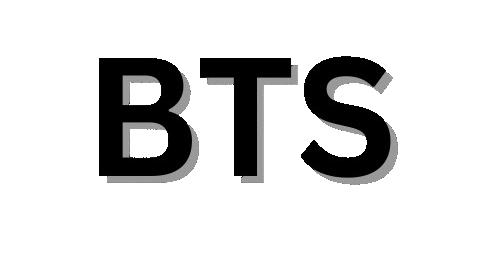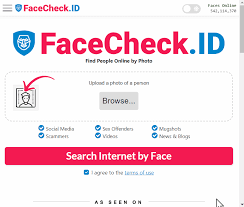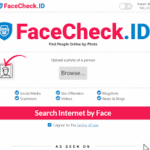FaceCheckID is a facial recognition tool. It searches the internet for faces. People use it for various reasons. For example, some use it for safety. Others use it to find people. The technology is very powerful. Therefore, it raises many questions. This guide will explore FaceCheckID. We will discuss its uses. We will also cover the controversies.
What is FaceCheckID?
FaceCheckID uses advanced AI technology. It scans images across the web. You can upload a photo. The system then analyzes the face. It compares it to a vast database. This database contains millions of images. These images are from public sources. For instance, social media is used. News sites and blogs are also sources. Consequently, it can find matches. The service presents potential matches.
This tool is a reverse image search. However, it focuses only on faces. This specialization makes it very effective. It can identify people from a photo. The accuracy can be quite high. This depends on the image quality. The system is designed to be simple. Anyone can use its interface. Thus, it has become widely known. It is a subject of much debate.
Key Features of FaceCheckID
FaceCheckID has several core features. Its main feature is facial search. You upload a picture to start. The AI then gets to work. It identifies key facial features. Then, it scours its indexed images. The results page shows possible matches. It provides links to the source. This lets you investigate further.
Furthermore, the process is very fast. You get results in seconds. This speed is a major advantage. The platform is also accessible. It has a simple web interface. You do not need technical skills. The service is often free to try. This low barrier to entry is key. It has led to its wide use. Because of this, it is controversial. The search can be done by anyone.
How to Use FaceCheckID Responsibly
Using FaceCheckID requires great care. The technology has serious implications. First, you should have a good reason. Are you trying to find a scammer? Are you checking a suspicious profile? These might be valid uses. However, using it for stalking is wrong. Using it to harass someone is illegal. Your intent matters a great deal.
Next, you must consider privacy. The person you search for has rights. You are accessing public information. But the context is important. A photo on a personal blog is different. It is not the same as a news article. Think before you act. The information is found by the system. Respect people’s digital footprint. Finally, verify the results. AI is not perfect. It can make mistakes. Always seek other confirmation.
The Technology Behind FaceCheckID
The technology powering FaceCheckID is complex. It is a form of artificial intelligence. Specifically, it uses deep learning. The AI is trained on huge datasets. These datasets contain millions of faces. The training teaches the AI. It learns to recognize facial patterns. It measures distances between features. For example, the space between eyes. Or the shape of the nose.
This creates a unique facial signature. When you upload a photo, it does the same. It creates a signature for that face. Then, it compares this signature. It searches for similar ones in its database. This process is called biometric matching. It is the same tech used in phone unlocking. It is also used in security systems. Consequently, it is very powerful. It is also constantly improving.
Data Sources for FaceCheckID
Where does FaceCheckID get its images? This is a very important question. The company states it uses public data. This means images available online. It crawls the internet for photos. This includes social media sites. It also includes news publications. Blogs and forums are also sources. Mugshot websites are another source.
Essentially, if an image is public, it can be indexed. It does not access private accounts. And does not hack into systems. It only collects what is open. This is a crucial distinction. However, many people are unaware. Their photos may be public by default. They may not realize they are searchable. This is a major part of the privacy debate. The ethics of this are questioned.
The Accuracy of FaceCheckID
How accurate is FaceCheckID? The accuracy can be quite high. However, it is not always 100%. Several factors influence the results. Firstly, the quality of the uploaded photo. A clear, well-lit photo works best. A blurry, dark photo will not. The angle of the face also matters. A straight-on shot is ideal.
Secondly, the database itself matters. Does it contain a photo of the person? If not, it cannot find a match. The AI can also make mistakes. It might match with a lookalike. This is a false positive. Therefore, you must be critical. You cannot assume a match is correct. It is just a lead. It is not definitive proof. Always use human judgment.
Ethical Concerns Surrounding FaceCheckID
FaceCheckID raises significant ethical concerns. The main issue is privacy. Many feel it is a violation. People post photos for their friends. They do not expect them to be in a database. This creates a sense of surveillance. It feels like a loss of control. Your face can be tracked by strangers.
Another concern is misuse. The tool can be used for harm. It could be used for stalking. It could be used for doxxing. This is revealing private information. It could also lead to misidentification. An incorrect match could harm someone. They could be wrongly accused of something. Thus, the potential for harm is real. These ethical issues are heavily debated. Lawmakers are considering regulations.
FaceCheckID in a Professional Context
FaceCheckID can have professional uses. For instance, journalists can use it. They can verify sources or identities. This can help in investigative reporting. Law enforcement might use similar tools. They can identify suspects from video. This can help solve crimes. However, this is also controversial. It raises questions about civil liberties.
Businesses might also see a use. They could check a candidate’s online presence. This is a grey area. It could lead to hiring discrimination. Companies must be very careful. They must follow employment laws. Using such a tool can be risky. It can open them up to lawsuits. In short, professional use is complex. It requires clear policies.
Limitations and Risks of FaceCheckID
FaceCheckID has important limitations. As mentioned, accuracy is not guaranteed. False positives can and do happen. Relying solely on its results is risky. You must verify information independently. Another limitation is its data. It only knows what is public. It cannot see private profiles. This means its search is not complete.
The biggest risk is misuse. In the wrong hands, it is dangerous. It can facilitate harassment and stalking. It can destroy a person’s privacy. There is also the risk of data breaches. What if the database gets hacked? This could expose a lot of information. Users should understand these risks. They must proceed with extreme caution. The platform’s power demands responsibility.
Conclusion: Navigating the World of FaceCheckID
In conclusion, FaceCheckID is a potent tool. It brings facial recognition to the public. It can find people from a single photo. The technology is impressive. It has some potentially positive uses. For example, fighting online scams. It can help identify bad actors.
However, the downsides are significant. The privacy implications are enormous. The potential for misuse is very high. It is a tool that must be used carefully. The ethical debates will continue. Society must decide on the rules. For now, users carry the burden. They must be responsible. Ultimately, FaceCheckID is a major development. It changes our relationship with our own image. It reshapes the meaning of public space.
READ MORE; Brand-Snokdio….






